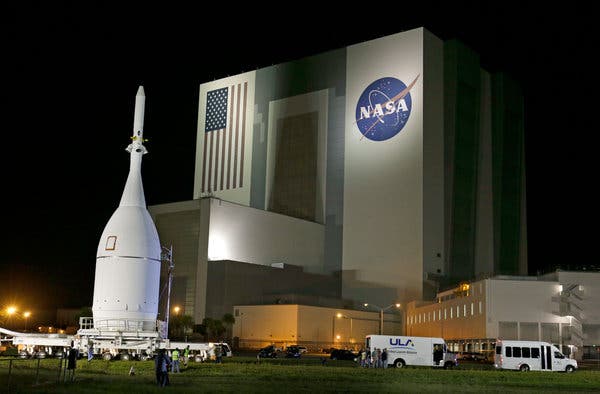What Trump Said
If you look at our facilities, they were virtually closed up. There was crabgrass growing on the runways. And now they’re vital and we’re — we’re doing — we’re going to Mars. We’re stopping at the moon.
False.
President Trump, like some of his predecessors, has retooled the government’s space program. But space exploration had not grinded to a halt before he took office in 2017. In fact, NASA for years has been aiming for a trip to Mars.
Casey Dreier of the Planetary Society, a nonprofit that promotes space exploration, said that the Trump administration “has been unusually attentive to space” but noted that it has “generally continued policies established over the past 15 years, and benefited from a rapidly maturing commercial space industry that has taken decades to develop.”
In 2004, President George W. Bush proposed a return to the moon as a springboard to Mars. President Barack Obama canceled that moon program in 2010, choosing to focus instead on reaching an asteroid and then Mars, while encouraging government financing of commercial spaceflight.
Mr. Trump has since scrapped the asteroid idea and refocused on the moon, eyeing a 2024 landing (however unlikely) as the interim step before reaching Mars. He also restored the National Space Council, “which has taken significant steps to propose updates to regulations around the commercial use of space and space traffic management,” Mr. Dreier said. And most recently, Mr. Trump authorized the creation of the United States Space Command, a precursor to the military Space Force he often champions.
Beyond these changes in mission, NASA has continued to operate and reach milestones.
During the Obama administration, the Curiosity Rover landed on Mars, the New Horizons spacecraft captured images of Pluto and the Juno spacecraft successfully entered Jupiter’s orbit.
While NASA’s annual budget is a fraction of what it was during the heyday of the space race, it has hovered between $16 billion and $21 billion for the past decade. Mr. Trump proposed cutting NASA’s funding in his budgets for the 2018 and 2019 fiscal years, though Congress ignored those suggestions.
What Trump Said
“Germany, France, Russia, many other countries made a lot of money with Iran. And we didn’t make money with Iran, which that was just one of the many bad parts about the deal.”
This is misleading.
As part of the Iran nuclear deal, the United States and European nations lifted economic sanctions on the country in early 2016, after international inspectors concluded that it had followed through on promises to dismantle large sections of its nuclear program.
The deal also loosened barriers to international trade with Iran. Mr. Trump was likely referring to trade surpluses when he claimed that other countries had “made a lot of money with” the country. (Though, as The New York Times has explained, trade balances are not inherently good or bad.)
In 2016, the three countries listed by Mr. Trump all had trade surpluses in goods with Iran — $2.2 billion for Germany, $1.3 billion for Russia and $918 million for France, according to data from the United Nations.
The United States also ran a trade surplus in goods with Iran that year, but a much smaller one of $183 million. That disparity existed in large part because the United States lifted nuclear-related sanctions on Iran only as part of the agreement, leaving intact other economic restrictions related to terrorism, human rights and missile technology that were “much more extensive than those of other countries,” according to the Peterson Institute for International Economics. In addition, about two dozen states have their own punitive measures on commercial dealings with Iran, on top of federal policies.
Mr. Trump withdrew the United States from the Iran nuclear deal in 2018.
Curious about the accuracy of a claim? Email factcheck@nytimes.com








